A SECOND “SPRING”
Pricking Out and Growing On. Whaa?
Make believe it’s spring. That’s what I’m doing this time of year as I drop seeds into minifurrows of potting soil in seedling trays. It’s as if I’m getting ready to plant a garden — and, in fact, I am. The fall garden.
Having a fall garden is like having a whole other garden with no additional space needed. That’s why I’m sowing in seedling trays rather than elbowing my way into the present garden’s valuable real estate.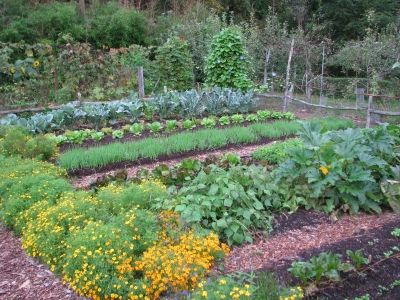
Today I sowed lettuce, endive, cabbage, kale, and cauliflower seeds. After a week or two of growth in a seedling tray, those seeds should have sprouted and seedlings will be large enough to “prick out” and carefully lift for “growing on” in individual. small pots or cells of multicelled flats of potting soil. I prick out plants by sliding a knife or small laboratory spatula under a clump of seedlings or individual seedlings as I lift while very gingerly grabbing a leaf. Each seedling gets dropped into a waiting hole in the pot or cell.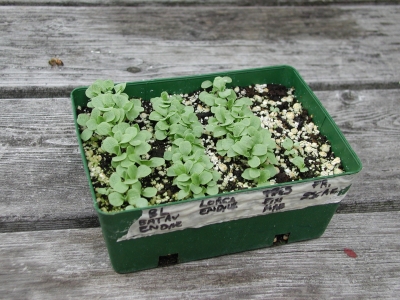
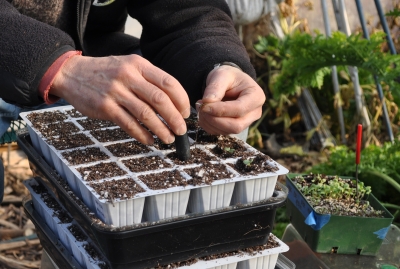
Most important when pricking out is to avoid damaging the very fragile stem of the seedling. I grab each seedling only by its leaf. And once each stem has been lowered into a hole in its new home, I carefully close up the hole around the seedling, firming the potting soil in place by pressing downward rather the inward.
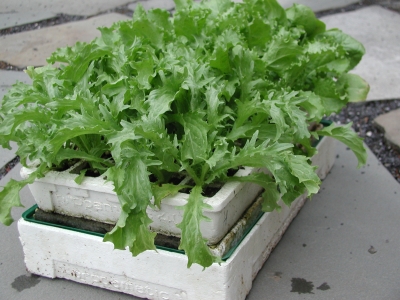
After a month or so in the pot or cell, seedlings are ready for transplanting out in the garden. 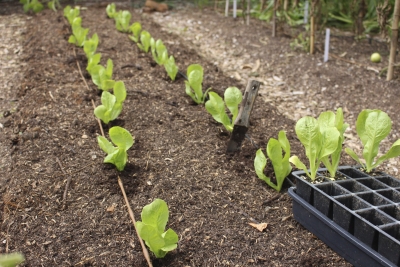
But where? Early sown bush beans peter out after a few harvests. That’s a place. (Pole beans start bearing later, but take over production to carry the torch the rest of the season.) I make four plantings of sweet corn, each about two weeks apart. The earliest sowings of corn should be finishing up and ready for being cleared by then.
Late in August, where I’ve gathered up mature onion and garlic bulbs, perhaps dug up cucumber vines that finally have succumbed to bacterial wilt, is the time for another wave of fall planting. I’ll sow seeds of spinach, mustard, arugula, and turnips directly in the ground.
Not every vegetable takes well to transplanting, yet some might warrant fall garden real estate, and need it now or soon. That would be vegetables that don’t transplant well: carrots and winter radishes.
Chinese cabbages, both bok choy and napa types vary a lot in days to maturity.
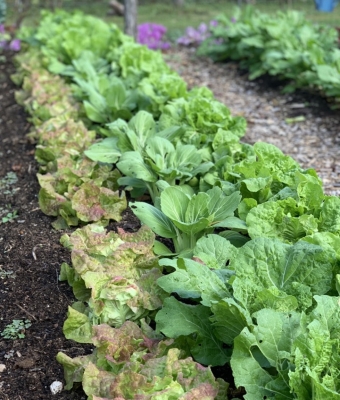
Bed of lettuce and chinese cabbage
Either can be sown directly in the garden, space permitting, or in seed flats for transplanting as space opens up. Which is a good segue to timing . . .
What? When?
To figure out when to sow any fall vegetable, look on the seed packet for the “days to maturity.” Cool weather and shorter days are going to dramatically slow growth as fall approaches, so I count on any vegetable being ready for harvest here in New York’s Hudson Valley about September 15th.
Gardeners south of here will have to push that date further along; north of here, sooner. If you’re new to fall gardening, keep good records of what you do, when you do it, and what happened, and you’ll be an expert fall gardener within a couple of years.
Counting back the “days to maturity” from September 15th tells me when to plant seeds. The exception is for vegetables — broccoli, cauliflower, and cabbage, for example — that usually are transplanted. For them, days to maturity is counted from when they are transplanted, so add three to four weeks, which is the time they would need to grow to transplant size.
The Commitments
Before beginning to plan for a delectable harvest of fall vegetables, three commitments are needed. The first is to maintain soil fertility. Remember, you are getting another growing season out of your garden, so apply fertilizer and liberal amounts of compost or other organic matter to the soil. Fall’s predominantly leafy vegetables are hungry plants.
The second commitment is not to forget to water. Seedlings beginning life in midsummer can’t get enough water for themselves through typical summer heat and drought. When sowing seeds in dry soil, open up a furrow, drop in seeds, then water the furrow thoroughly before covering it and firming the soil. Sprinkle water right over where the furrow was every day or two until the seedlings emerge, then give the row a thorough soaking once a week unless heavy rains fall. Natural rainfall and cooler temperatures will lessen or eliminate watering chores as fall approaches.

Fertile, weed-free soil
And third, weed. Summer weeds not only take up space that could be used for fall vegetables, but also steal water and nutrients from garden plants. A few minutes weeding on a regular basis is easier and takes up less total time than tugging and chopping at large weeds overgrown through neglect.
Unlike the frenetic spring garden that rushes plants and gardeners along, the fall garden is a relaxed affair. Vegetables grow slowly to maturity, and, rather than turning bitter and sending up seedstalks, remain in excellent condition for eating. Frosts don’t faze most fall vegetables; it even improves the flavor of many of them.
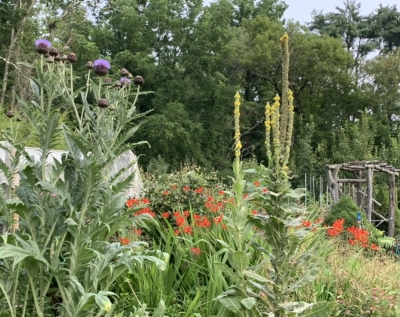
Summer flowers
Okay, enough about fall. I’m gong back now to enjoying blueberries, coneflowers, mulleins, tomatoes, and other treats of the summer garden.



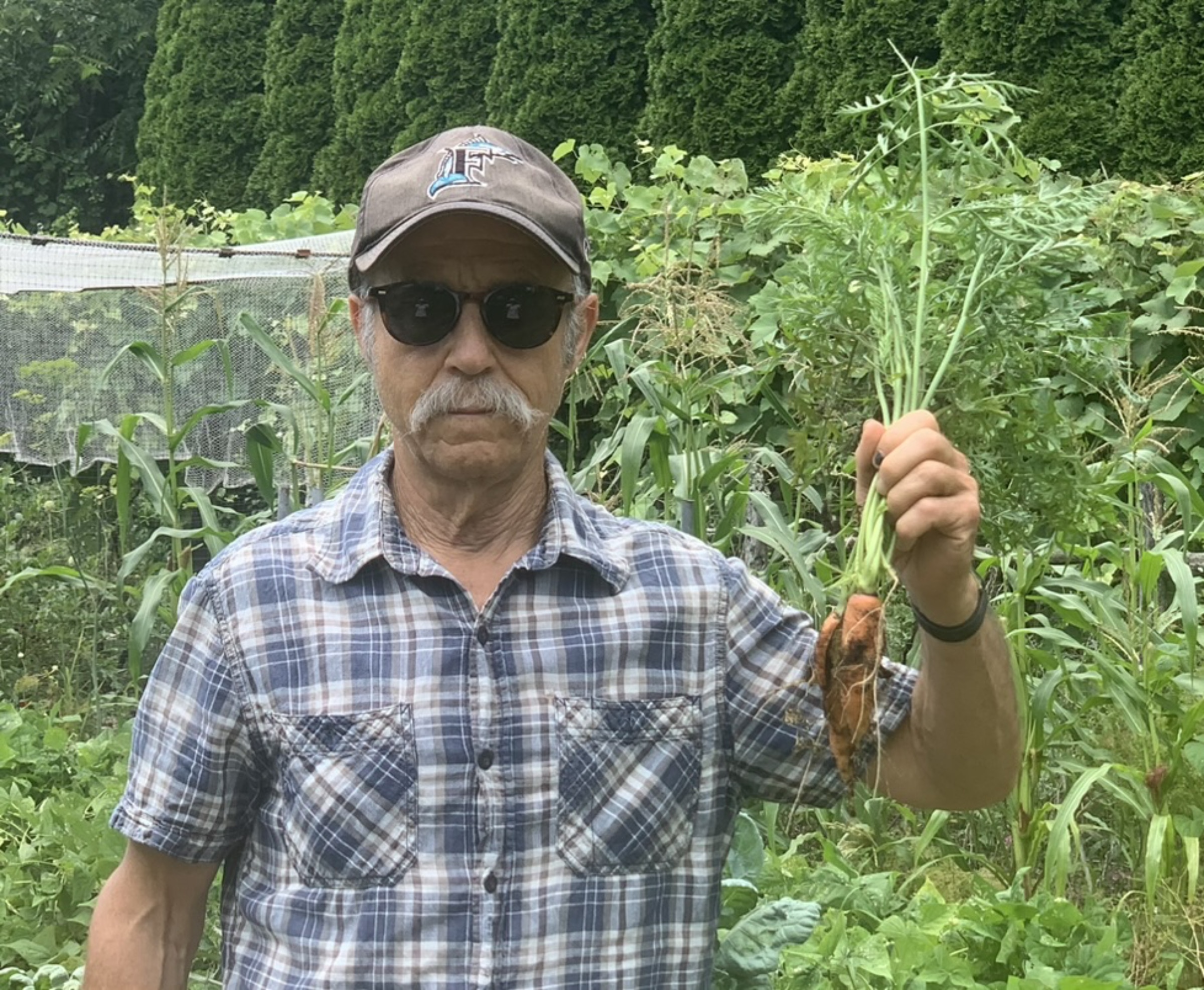
When you pick September 15, is that because it is your first frost date? Or is there another reason?
No, it’s not my first frost date. It’s just an approximation of when daylength and cooler temperatures make maturation after that date very slow. Around here, at least. You could do some sequential plantings of, say, turnips, and see when the optimum time to sow them is, then come up with your a date for where you are. The whole thing is very inexact.
A question about figs at this time of year. I grow figs in big pots. I roll them into the garage in the winter. Do you think it would be helpful to ripen more of them before cold weather if I cut off the growing branch tips after a lot of figs have formed? I have tried this with tomatoes and it seems to work. I do not have two of the same variety to do an A/B comparison so wonder if you have experience with doing this.
I have seen your wonderful fig in the green house. Perhaps I will be able to do that at my next home. No room for a greenhouse here.
Once I learned to extend the season for veggies on both ends from you and others my harvests have greatly increased. Really worth the effort.
I read about pinching the growing tips to spread fruit formation and ripening. I’m less so now. I pinch when an upper, vigorous shoot has made 5-7 leaves. In the future, I’ll test it more quantitatively. Dormant pruning is also an influence. All this, and more of course, is covered in my book GROWING FIGS IN COLD CLIMATES.
Transplant into fresh compost in pots or cell trays.